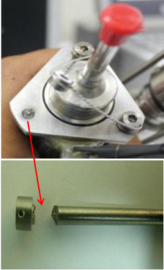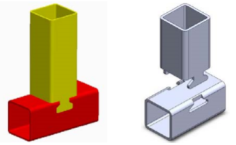 A paper published in « Case Studies in Engineering Failure Analysis« , available on sciencedirect.com.
A paper published in « Case Studies in Engineering Failure Analysis« , available on sciencedirect.com.
As a qualification of bolt for flight assembly, the bolt assembly has undergone proof pressure test at 2.4 MPa, Vibration test at frequency range of 20–100 Hz, ±3 db/oct for 120 s in both lateral and longitudinal directions and flight acceptance test. During routine visual inspection before electrical check, it was observed in one of the three fasteners that the head of the bolt had got sheared off from the shank portion of bolt. Further, a failure analysis was carried out on the failed bolt.
The objective of the study is metallurgical analysis of the failed bolt, fractography study to find out the root cause of the failure, and optimization of processing parameters for fastener manufacturing.

 A paper presented at «
A paper presented at « 

